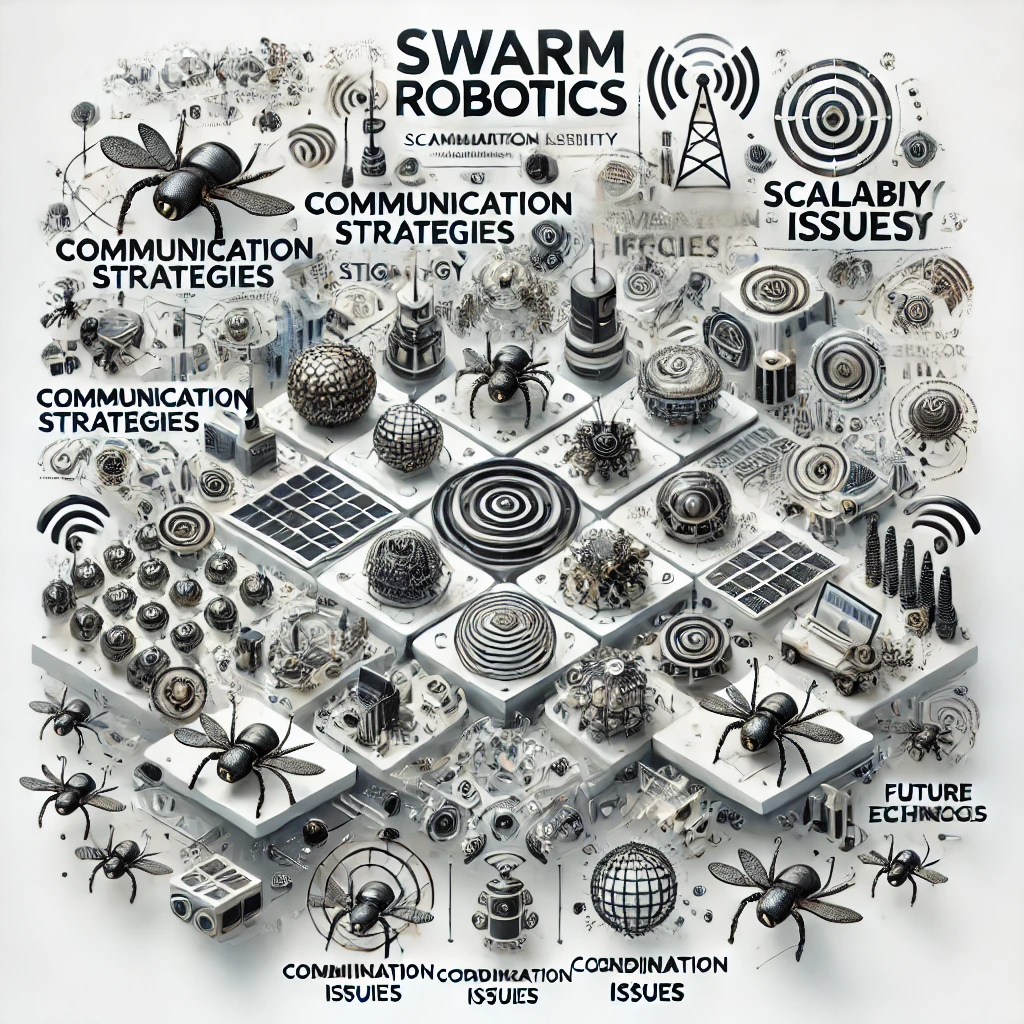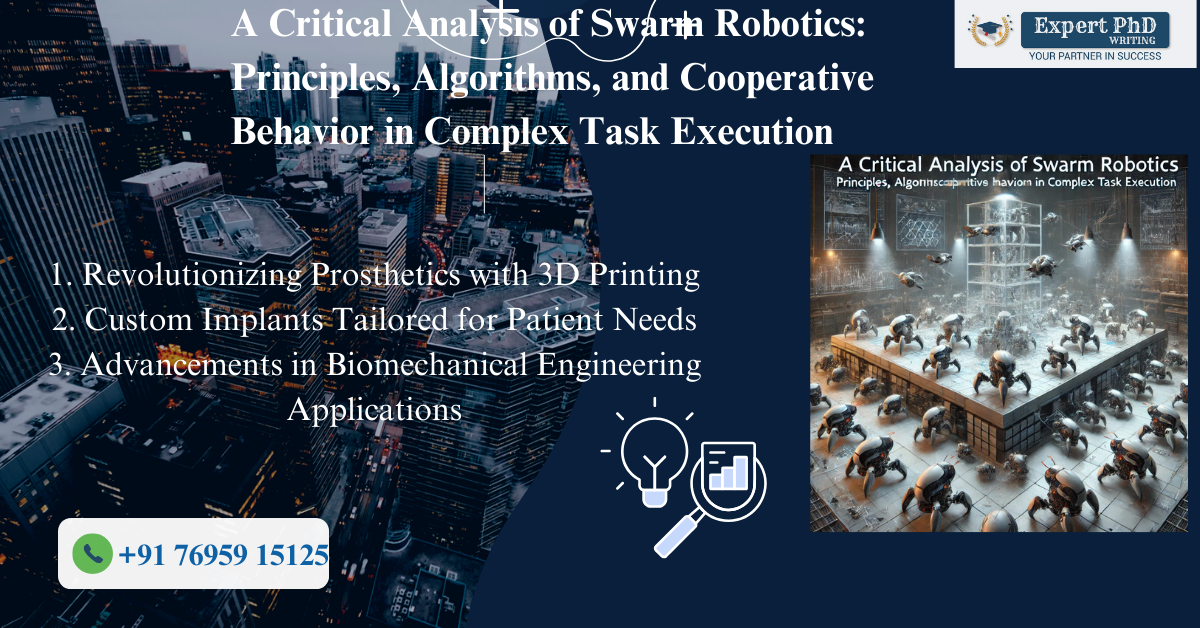A Critical Analysis of Swarm Robotics: Principles, Algorithms, and Cooperative Behavior in Complex Task Execution
Swarm robotics, inspired by the collective behavior of social organisms such as ants and bees, represents a promising field within robotics and automation. This approach capitalizes on the principles of decentralization, scalability, and robustness, allowing groups of simple robots to cooperate effectively in performing complex tasks. This analysis critically evaluates the underlying principles and algorithms of swarm robotics, focusing on their effectiveness and the challenges faced in real-world applications.
Decentralization in Swarm Robotics
One of the foundational principles of swarm robotics is decentralization, which stands in contrast to traditional robotic systems that rely on a central controller. In swarm robotics, individual robots operate based on local information and interactions with their environment and other robots. This decentralized approach enhances scalability, allowing systems to efficiently increase or decrease the number of robots without requiring significant changes to the control algorithms (Shahzad et al., 2023).

Robustness and Scalability
The scalability of swarm robotics is further complemented by the principle of robustness, which ensures that the system can continue functioning effectively despite the failure of individual robots. This property is crucial for applications in unpredictable environments, such as search and rescue missions, where individual robots may be lost or incapacitated (Dias et al., 2021).
Key Algorithms in Swarm Robotics
The algorithms that drive swarm robotics play a critical role in facilitating cooperative behavior. Notable algorithms include Particle Swarm Optimization (PSO), flocking algorithms, and Ant Colony Optimization (ACO). PSO, for instance, models the social behavior of birds and is utilized to solve complex optimization problems by simulating a group of particles that "fly" through a solution space (Yang & Li, 2022). Similarly, flocking algorithms, inspired by the behavior of birds, allow robots to maintain cohesion and avoid collisions while moving toward a target (Li et al., 2024).
Ant Colony Optimization or ACO, which draws inspiration from the foraging behavior of ants, optimizes routes in dynamic environments by leveraging indirect communication through pheromone trails. These algorithms enable swarm robots to coordinate their actions and adapt to changing conditions, contributing to the successful execution of complex tasks (Liu et al., 2024).
Challenges in Swarm Robotics
Despite the promising capabilities of swarm robotics, several challenges and limitations hinder its widespread adoption. One primary concern is the communication strategies employed within swarm systems. While direct communication methods, such as radio signals, can enhance coordination, they are often limited by range and reliability. Indirect communication methods, such as stigmergy, allow robots to leave environmental cues for others to follow, but the effectiveness of these cues can be influenced by environmental factors, leading to inefficiencies (Iqbal et al., 2023). Thus, achieving a balance between communication efficiency and robustness remains a critical area for research and development.

The Future of Swarm Robotics
Furthermore, the scalability of swarm robotics, while an inherent advantage, poses its own set of challenges. As the number of robots increases, the complexity of coordination and task allocation also rises. Research indicates that larger swarms may encounter diminishing returns regarding efficiency, as communication overload and collision avoidance become significant issues. Addressing these challenges requires advanced algorithms that can dynamically adapt to changes in swarm size and environmental conditions. The future of swarm robotics looks promising, particularly with the integration of artificial intelligence and machine learning. These technologies can enhance the decision-making capabilities of individual robots, allowing them to learn from their experiences and adapt their behaviors in real time (Türkler et al., 2022). Additionally, advancements in sensor technology can improve the perception capabilities of swarm robots, enabling them to operate effectively in complex and dynamic environments.
Conclusion
In conclusion, swarm robotics offers a fascinating approach to solving complex tasks through the collective behavior of simple robots. Its principles of decentralization, scalability, and robustness, combined with advanced algorithms, have the potential to revolutionize various industries, including agriculture, logistics, and disaster response. However, challenges related to communication, scalability, and coordination remain significant barriers to full implementation. Continued research and development in swarm robotics, particularly in integrating AI and improving communication strategies, will be crucial for unlocking its full potential and realizing its promise in real-world applications.
References
- Dias, P. G. F., Silva, M. C., Filho, G. P. R., Vargas, P. A., Cota, L. P., & Pessin, G. (2021). Swarm Robotics: A Perspective on the Latest Reviewed Concepts and Applications. Sensors (Basel, Switzerland), 21(6). https://doi.org/10.3390/s21062062
- Iqbal, A., Nauman, A., Hussain, R., & Bilal, M. (2023). Cognitive D2D communication: A comprehensive survey, research challenges, and future directions. Internet of Things, 24, 100961. https://doi.org/10.1016/j.iot.2023.100961
- Li, C., Yang, Y., Huang, T.-Y., & Chen, X.-B. (2024). An improved flocking control algorithm to solve the effect of individual communication barriers on flocking cohesion in multi-agent systems. Engineering Applications of Artificial Intelligence, 137, 109110–109110. https://doi.org/10.1016/j.engappai.2024.109110
- Liu, Y., Wang, Z., & Liu, J. (2024). A Quick Pheromone Matrix Adaptation Ant Colony Optimization for Dynamic Customers in the Vehicle Routing Problem. Journal of Marine Science and Engineering, 12(7), 1167. https://doi.org/10.3390/jmse12071167
- Shahzad, M. M., Saeed, Z., Akhtar, A., Munawar, H., Yousaf, M. H., Baloach, N. K., & Hussain, F. (2023). A Review of Swarm Robotics in a NutShell. Drones, 7(4), 269. https://doi.org/10.3390/drones7040269
- Türkler, L., Akkan, T., & Akkan, L. Ö. (2022). Usage of Evolutionary Algorithms in Swarm Robotics and Design Problems. Sensors, 22(12), 4437. https://doi.org/10.3390/s22124437
- Yang, X., & Li, H. (2022). Multi-sample learning particle swarm optimization with adaptive crossover operation. Mathematics and Computers in Simulation, 208, 246–282. https://doi.org/10.1016/j.matcom.2022.12.020
